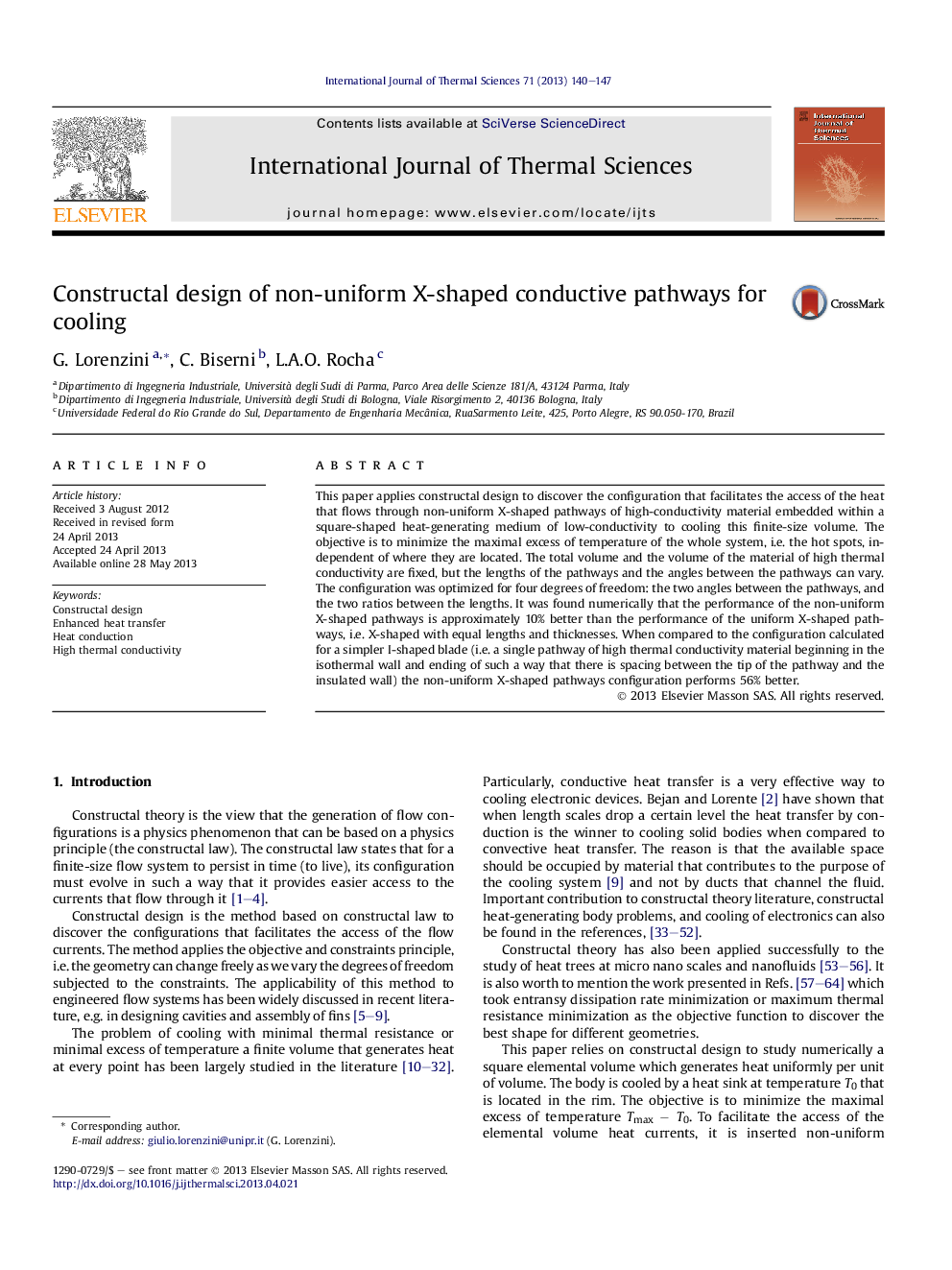| Article ID | Journal | Published Year | Pages | File Type |
|---|---|---|---|---|
| 669713 | International Journal of Thermal Sciences | 2013 | 8 Pages |
•We study constructal optimization of heat flow through non-uniform X-shaped pathways.•Such material is embedded within a heat-generating medium of low-conductivity.•The objective is to minimize the maximal excess of temperature of the whole system.•The configuration was optimized for four degrees of freedom.•The X-shaped pathways configuration performs 56% better than I-shaped blade.
This paper applies constructal design to discover the configuration that facilitates the access of the heat that flows through non-uniform X-shaped pathways of high-conductivity material embedded within a square-shaped heat-generating medium of low-conductivity to cooling this finite-size volume. The objective is to minimize the maximal excess of temperature of the whole system, i.e. the hot spots, independent of where they are located. The total volume and the volume of the material of high thermal conductivity are fixed, but the lengths of the pathways and the angles between the pathways can vary. The configuration was optimized for four degrees of freedom: the two angles between the pathways, and the two ratios between the lengths. It was found numerically that the performance of the non-uniform X-shaped pathways is approximately 10% better than the performance of the uniform X-shaped pathways, i.e. X-shaped with equal lengths and thicknesses. When compared to the configuration calculated for a simpler I-shaped blade (i.e. a single pathway of high thermal conductivity material beginning in the isothermal wall and ending of such a way that there is spacing between the tip of the pathway and the insulated wall) the non-uniform X-shaped pathways configuration performs 56% better.
